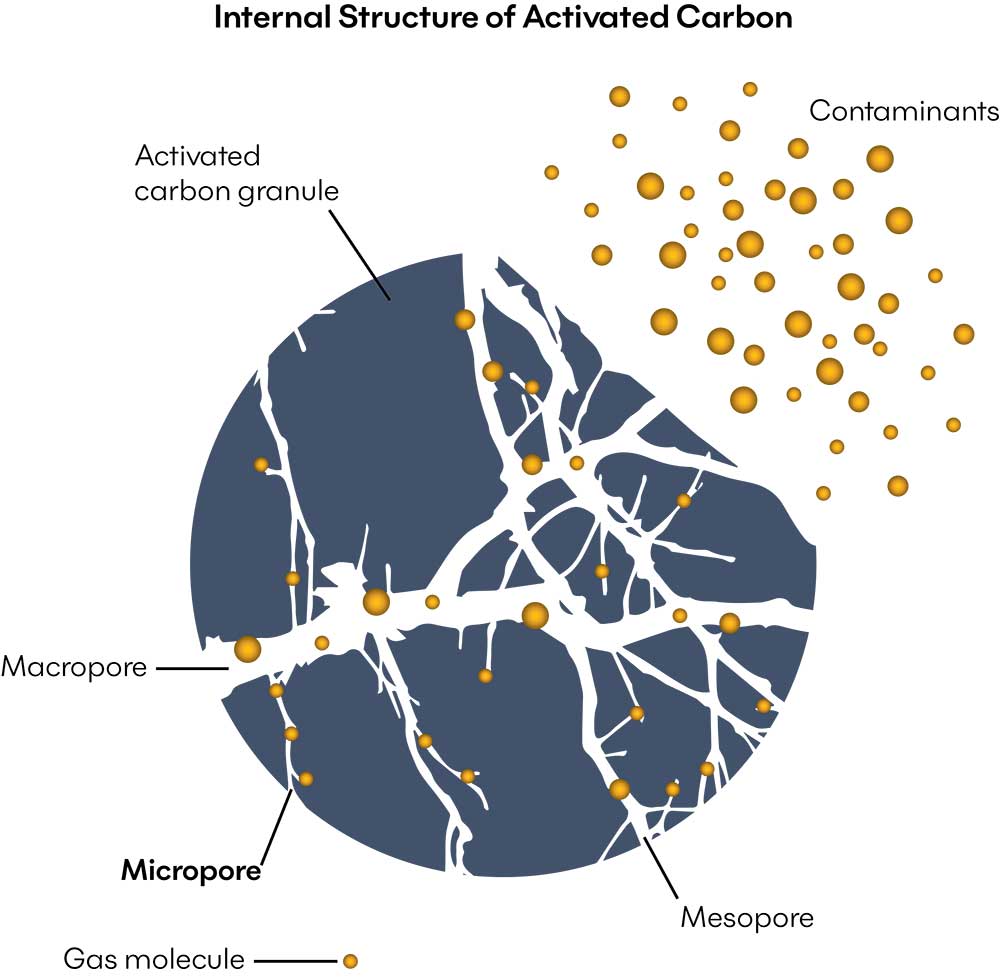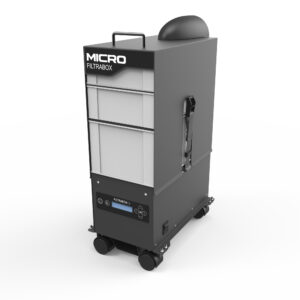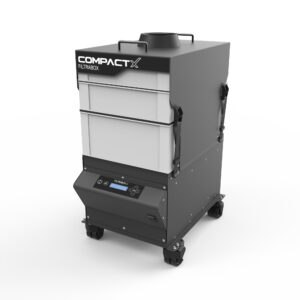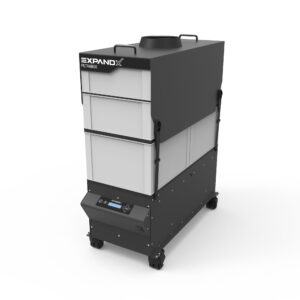Laser Fume Extractors

Laser Engraving / Cutting / Marking Fume Extractor
Lasers can engrave, cut or mark by vaporizing the target material with a high-energy light beam. Smoke and gases are generated as a byproduct of this process. These are collectively called laser fumes. The laser fumes are made up of respirable dust and volatile organic compounds (VOCs). Filtrabox’s three-stage, high-efficiency filter arrangement captures the fumes directly from the source and recirculates purified, clean air back into the work environment, improving indoor air quality. Simple dust collectors are not enough. You need a comprehensive fume extraction solution for laser fumes. Great for laser engraving and laser cutting.
Systems Starting at $1,995
Laser Fumes Are Made Up of Two Components:
1. Respirable dust:
All laser marking, engraving, and laser cutting systems (C02, fiber, and YAG lasers) unavoidably generate respirable dust (2.5 microns and less in diameter). Given their small diameter, the individual dust particles are invisible to the naked eye but can usually be seen as smoke in high concentrations. Respirable dust can penetrate deep into the lungs and increase health risks. However, high-quality, performance-tested HEPA filters can remove respirable dust from the air, therefore making the air safe to breathe. FIltrabox uses high-performance HEPA filters with an impressive tested efficiency of 99.999% @ 0.3 microns. This means that it removes 99.999% of the most aerodynamically penetrating particles, known to be 0.3 microns, while smaller and larger particles are even more effectively captured, resulting in extremely clean air, free of respirable dust.

2. Volatile Organic Compounds / VOCs:
Volatile Organic Compounds, also known as VOCs, are the gaseous component of the contaminants emitted during the laser vaporization of most materials. Sustained exposure to high concentrations of VOCs is a health risk. Most VOC molecules will physically bond to the activated carbon’s network of microscopic pores. This is called adsorption. Some other VOCs require alternative chemical treatments to deactivate them. Filtrabox’s blend of both high-performance activated carbon adsorption media and potassium permanganate chemical treatment media offers the broadest range of laser VOC protection available.

Activated carbon is very porous. Three types of pores exist in activated carbon. These pores capture and retain contaminants within them.
- Micropores: the radius is smaller than 1 nanometer (best for gas molecules).
- Mesopores: the radius is 1-25 nanometers
- Macropores: the radius is larger than 25 nanometers
Carbon types with a high proportion of micropores are best for adsorbing gas molecules. We use coconut shell-activated carbon which has the highest micropore content.
Frequently Asked Questions
Your Title Goes Here
Your content goes here. Edit or remove this text inline or in the module Content settings. You can also style every aspect of this content in the module Design settings and even apply custom CSS to this text in the module Advanced settings.
What is the primary purpose of a laser fume extractor?
The primary purpose of a laser fume extractor, like Filtrabox's model, is to capture the fumes generated during laser engraving, cutting, or marking and recirculate purified, clean air back into the work environment. This improves indoor air quality and ensures a safer workspace.
What are laser fumes made up of?
Laser fumes comprise two primary components: respirable dust and volatile organic compounds (VOCs).
Are simple dust collectors sufficient for handling laser fumes?
No, simple dust collectors are not enough. A comprehensive fume extraction solution designed explicitly for laser fumes is required.
What kind of lasers generate respirable dust?
All laser marking, engraving, and cutting systems—including CO2, fiber, and YAG lasers—generate respirable dust.
What is the risk associated with respirable dust?
Respirable dust particles are so small (2.5 microns and less in diameter) that they can penetrate deep into the lungs and pose increased health risks.
How effective are Filtrabox's HEPA filters?
Filtrabox uses high-performance HEPA filters tested at H14, which is 99.99% at 0.3 microns. It captures virtually all respirable dust particles, producing extremely clean air.
Can the dust particles be seen with the naked eye?
Given their small diameter, individual dust particles are usually invisible to the naked eye but can often be seen as smoke in high concentrations.
Why is a three-stage, high-efficiency filter arrangement important?
A three-stage, high-efficiency filter arrangement ensures comprehensive capture of respirable dust and VOCs, making the air dust-free and free from harmful organic compounds.
Is Filtrabox's fume extractor suitable for all laser applications?
Filtrabox's fume extractor is excellent for all laser applications, including engraving and cutting.
How does a fume extractor like Filtrabox improve indoor air quality?
By capturing laser fumes directly from the source and recirculating purified, clean air back into the work environment, Filtrabox's fume extractor significantly improves indoor air quality.








